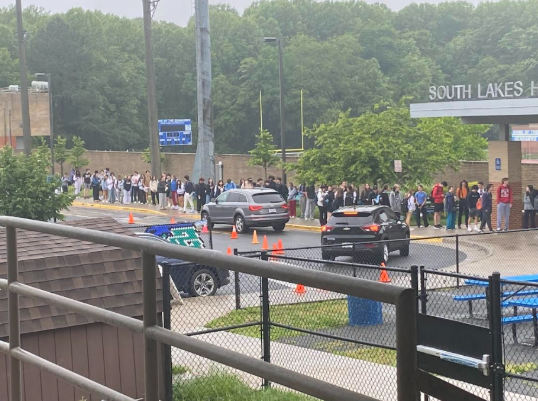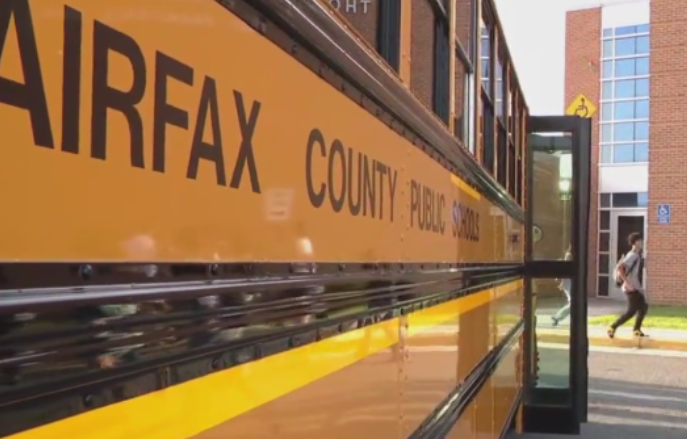Administrators continue to look into the possibility of a late Wednesday start.
The extra time in the morning would be allotted for teacher collaboration. It would begin at 7:20 a.m. and would be an excellent opportunity for teachers and students to prepare for upcoming classes.
This option should be seriously pursued.
A survey of teachers conducted last year revealed that satisfaction was lower than the average level of teacher contentment in Fairfax County. Assistant principal Chad Lehman then created this late Wednesday start proposal, which was well-received by the PTSA at one of its meetings last May.
This late start would ensure that teachers have the necessary time to maximize teaching content. This would also reduce teacher conflicts after school, so teachers could be more accessible to students seeking additional help not during the class period.
“Teachers are required to work in collaboration with members of their instructional teams,” Principal Kim Retzer said. “When we create the class schedules we try to give teachers of the same courses the same planning periods to give them this time to meet. However, we can’t accommodate for every group of teachers, so this collaboration time would allow for departments to have meetings and give important announcements.”
Throughout the discussions of the possible bell schedule change, Retzer sees both sides.
“I understand completely the benefits of the late start from the teacher’s perspective,” Retzer said. “However, I’m not sure how effective this time would be from the student perspective.”
Many students applaud the proposal, believing it will make a difference in completing homework at a reasonable hour, as opposed to staying up in the wee hours of the night.
“We would have time to study and get extra homework done,” freshman Lindsey Lozoskie said. “Instead of staying up really late the night before, we can do it in the morning.”
Although it is ideal in theory, there are a few uncertainties that could derail the prospect.
During teacher collaboration, students who ride the bus would still arrive according to the regular
schedule, while those who drive would be allowed to arrive fifty minutes later. Some are concerned that students would use the freedom unwisely.
“Those who take the bus and arrive early will have to sit and do nothing during that time,” sophomore Polly Lynch said. “Also, many will use it as an opportunity to get in trouble at or around the school.”
Retzer shares Lynch’s concerns.
“If 600 or so students ride the bus and come to school at 7:00 or 7:10 a.m., then the only places that they could stay would be the cafeteria and library,” Retzer said. “Who would supervise them? That responsibility would fall onto security and the administration.”
To eradicate this problem, students could be assigned to a specific area where attendance would be taken, perhaps similar to the recently enacted teacher advisory period.
Nonetheless, students who support the idea of a late start think that attendance would increase for the first block.
“Wednesday is the middle of the week, so students are worn out at that point,” junior Mackenzie Evans said. “Attendance would be higher for first and second period classes if students were allowed extra sleep.”
Retzer worries about attendance rates.
“I’m worried that students will take the day off because they think a shortened day is pointless,” Retzer said. “We plan to look at other FCPS schools that use this schedule and their attendance rates and see if there is a trend in absences or tardies.”
Though this is a valid concern, attendance to the first blocks of the day might still increase since there would be more time for students to rest. Students would not feel as fatigued.
This extra hour would make a difference in the concentration and focus of students during first and second period.
The administration must also address the issue of classes. On green days the best way to shorten the day is to remove Seahawk Seminar. As for blue days, when four 90-minute classes occur, how would the schedule change?
“For both blue and green days the sequence of classes would not change,” Retzer said. “The schedule would be shortened on blue days and green days. Green days would have a smaller Seahawk Seminar.”
Even with these quandaries, the idea of a late Wednesday start makes sense. The extra time would benefit both students, who would feel more refreshed in the typically most tiring part of the week, and teachers, who would be able to prepare for their upcoming lessons and maximize their time with their fellow group members.
The system has been effective in six other county schools of varying populations. The late Wednesday start would serve in accomplishing its main mission of creating a foundation for academic excellence.












